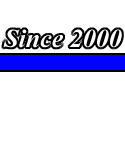

 |
|
|
Main
Video Games Interactive
Forums Hosted Sites
|
By
Cloudmann Introduction: Still in the middle of the 16-bit era, this game, like the two previous DD games, was ported to the two powerhouse 16-bit home computers of the time: the Amiga and the Atari ST. Read my previous two Atari ST reviews for a bit of background on the Amiga/ST rivalry. The systems were nearly identical and the resulting games ended up being equally close. All three titles were developed on the ST and then ported to the slightly more powerful Amiga. While the Amiga version of this game didn’t flex any of its muscle (with the exception of its nice title tune), the ST port does a better job pushing its target system to its limits. That said, the arcade original was a mediocre title. How does this fare?
Graphics: A Just like the Amiga, the ST had extensive graphics capabilities, and just like the Amiga port of this game, the ST port does a nice job, outpacing even the arcade at times. Colors are vibrant, everything is lush, and it all looks very pretty. The arcade original looked a bit dull and uninspired, and this does come home to the ST port. All said though, it’s a fine effort that exceeds the arcade’s color use, scrolling, and smoothness of animation. Nice job.
Sound: B The Amiga port took this ST port and removed the music to redo it from scratch. The end result was gameplay that was just as quiet as ever (having no in-game music) with some really “meh” sound effects, but that title tune was nice. Not so much here. Again, the in-game music isn’t there, the sound effects are still “meh,” and there is title music. But, it doesn’t push the FM synthesis chip as much as the Amiga port. It sounds better than a Commodore 64 SID, but not by much. Not bad, but not as good as it could have been.
Enemies: C They’re all here. They’re still drab and uninspired. They’re still cheap as ever. Their AI is still fairly low, and this all still sucks. Weapons: D+ Read my Amiga review. Don’t buy the weapons, and don’t use them. They're horrible.
Controls and Moves: C It’s not a problem with the port of the game, but the controls are just as sluggish and lacking in moves as the arcade port. The fact that you have to “buy” special moves sucks. It sucks and leaves a bruise. Bleh!
Modes: C+ One player, two player, and nothing else. Since the arcade version allowed a third player to suffer through the game with you, that makes this port less than accurate. There should have been a home version port without the shop feature. Not bad, but not great.
Conclusion/Overall: C+ The 16-bit ports of this game were done well enough. The problem was the horrible source material. Wow, that game was bad. Again, I’d liked to have seen better use of both the franchise and the 16-bit muscle in the Genesis/Amiga/ST to put out some bad-ass DD3 title like the NES game. Now that was an effective, creative solution to a shoddy arcade game. Developers need to take a step back and not simply port a title because it’s there. If it’s crap to begin with, a fine translation just gives you a nicely ported pile of crap. Either way, it disappoints, nobody wants it, and whatever else is done, it still stinks.
|
||||||||||||